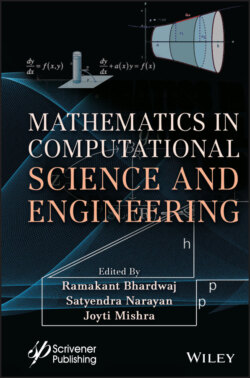Читать книгу Mathematics in Computational Science and Engineering - Группа авторов - Страница 48
2.3 Brief Historical Development of Resistivity Inversion
ОглавлениеAccording to the literature review in the field of electrical geophysics, interpretation of electrical resistivity data using electrical resistivity inverse methods are commonly done for layered models and geological structures (e.g., groundwater exploration and mapping & monitoring of groundwater). However, in the field of mineral exploration, geothermal exploration, mapping and monitoring of in-situ processes, the layered geologic models are inadequate. With the advent of large computers, two-dimensional (2-D) numerical electrical modelling techniques for surface-to-surface electrode and other electrode configurations are used extensively to interpret electrical data. Integral equation method has a limitation because it allows inhomogeneties only inside the homogeneous sounding host media. Three-dimensional (3-D) numerical modelling methods using finite difference and finite element methods are reported in the geophysical literature. These methods are useful to compute electrical model response over a given 3-D geologic structure. A complete overview about the forward and inverse modelling in electrical geophysics may be found in Narayan [3].
Most of the forward modelling methods have attempted to address some aspect of the design of field experiments. These methods are not very useful for the interpretation of electrical field data on two counts. First, it is based on a trial-and-error mode and second, it is time intensive. Furthermore, they do not yield additional information. Therefore, it is important to introduce a new and effective electrical inversion method to interpret electrical field data in terms of 2-D or 3-D geological models for a variety of electrode configurations. This article emphasizes to use a generalized inverse theory for multi-dimensional structures and an attempt has been made to develop a practical way of inverting the resistivity data for mapping and monitoring two-dimensional (2-D) geologic features using a pair of surface and subsurface electrodes [3]. A brief historical development of resistivity inversion (one-dimensional (1-D) resistivity inversion, two-dimensional (2-D) resistivity inversion, and three-dimensional (3-D) resistivity inversion) used in environmental, engineering and hydrological fields has been reported extensively [4–12].
Electrical impedance tomography (EIT) methods are also known as electrical resistivity imaging methods – another version of resistivity inversion. These methods have proven to work nicely in most of the geophysical settings. EIT methods/imaging methods have been gaining momentum rapidly in recent years. This is due to the fact that they are easy to use and they are non-invasive testing tools. EIT methods or electrical resistivity methods are based on a low-frequency electrical current or DC current (unidirectional flow of electric charge) to probe a medium of the system, and measure its resistance or impedance of electrical current flow. EIT methods are highly sensitive to changes in electrical resistivity. In EIT methods, a known amount of electrical current is injected in the medium of the model and resulting electrical potential field is measured around the boundary points of the medium of the model. From these data, it is possible to perform electrical resistivity inversion of these potential field data to determine the electrical conductivity or resistivity inside the medium of the model that is being probed by the currents. In this way, the internal resistivity or electrical conductivity distribution is reconstructed using electrical measurement from the boundary of the medium of the model under investigation. Such electrical resistivity or conductivity distribution gives valuable information about the interior of the medium. Basically, all EIT methods deal with solving forward problem and inverse problem iteratively. EIT methods are used for various shallow depth archaeological prospecting, geothermal resource prospecting, geo-environmental monitoring, hydrogeological invitations, and geotechnical investigations etc. A good account of EIT methods and electrical resistivity imaging tools may be found in many geophysical literatures [13–20]. In brief, all these inverse problems are solved iteratively until a best possible solution is obtained.
